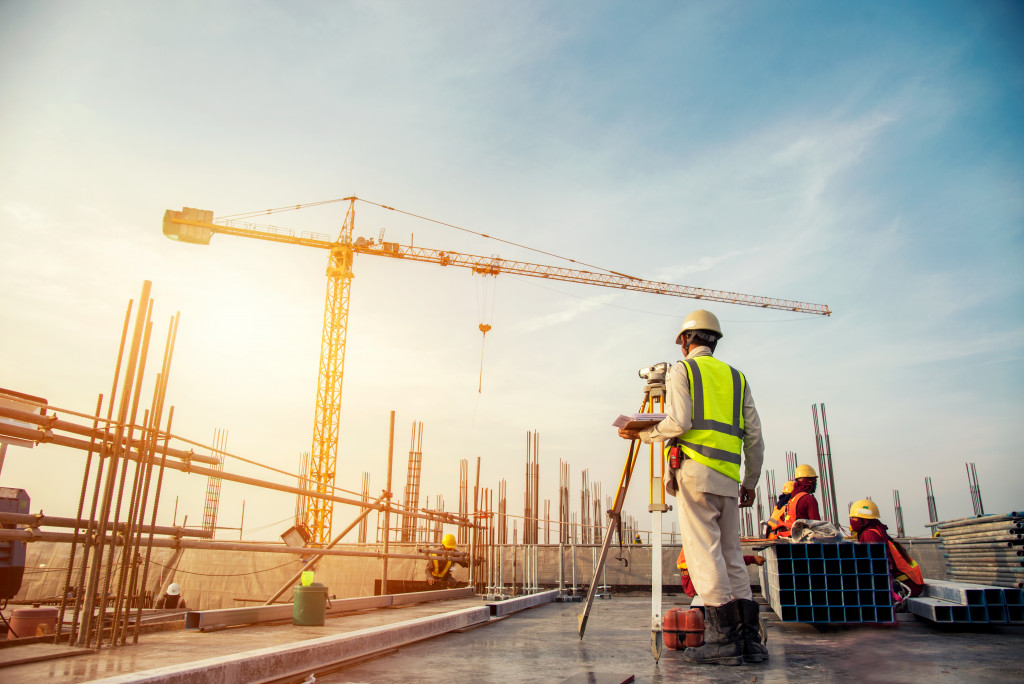Construction sites are one of the most perilous and dangerous working sites. According to OSHA, there are more than 6 million construction workers in over 250,000 construction sites all over the country. Compared to other industries in the same category, the rate of fatalities is much higher in the construction industry.
The potential hazards in a construction site include the following:
- Trench Collapse
- Scaffold Collapse
- Falls
- Equipment Failure
- Electric Shock
- Motion Injuries
- Vehicular Accidents
- Improper Use of PPE
If you are in the construction business, it is your main responsibility to ensure the safety of your personnel. Implementing a safety and health program can help you reduce the risks of workplace incidents that can injure your personnel and may delay your project. However, the implementation of a safety and health program is not enough. It will take the participation of the whole organization to ensure the success of your safety program.
The Role of Management in Ensuring Everyone’s Safety
Top management should always be on top of the situation on the site. There is no one-size-fits-all safety program for all projects. Safety requirements can vary depending on the type and location of the project. For instance, in large construction projects where different types of heavy equipment are used, regular maintenance should include the checking and inventory of heavy-duty truck engine parts. This is to help avoid accidents involving the malfunction of heavy-duty trucks on the site.
Management should set clear safety and health objectives, which should be augmented with sufficient resources and support. Goals, without any definite plan on how to achieve them, are meaningless. They should be laid out to the rest of the team, with a set of action points on meeting each goal.
Worker Participation and Cooperation Is a Must
Workers must be represented in the setting of health and safety goals of the whole construction team. Who to better identify the risks on the site than those who are constantly exposed to them?
Workers must know their roles in how they can contribute to the realization of the program. Each one has his own role in ensuring on-site safety, including temporary workers and contractors. It will take just one carelessness to put all your efforts in vain. Getting everyone on-board is extremely important for the success of your safety and health programs.
There must be open communication channels between the workers and management for safety concerns and suggestions. This will ensure that the program will be able to address safety risks as they arise. There must also be available channels for contractors as well as staffing agencies. They should immediately communicate hazards that may arise from their activities so that proper planning and scheduling can mitigate health and safety risks.
Continuous Risk Assessment Is Important
The safety risks present in your worksite can change depending on your current activities and the current situation in your location as well. You cannot apply corrective measures if you do not know the existing problems. Your safety program must include procedures for the continuous assessment of risks and hazards.
Health risks can also affect your construction site. One example is the current coronavirus pandemic that is sweeping the globe. It has put all industries on their toes and guard. A single case of COVID-19 in your team can put the whole operation on pause, delaying your project.
Prevention and Control of Identified Risks and Hazards

Identification of the risks and hazards is not enough. You must take action to ensure the safety of everyone on site.
To control the risks of COVID-19, the CDC recommends that all workers wear face masks onsite and practice safe physical distancing. Wearing face masks reduces the risks of spreading infected respiratory droplets whenever he talks, sneezes, or coughs. Implementing a ‘no face mask, no entry’ rule in your construction site can help protect everyone and reduce their risks of getting infected.
Some recommended steps that you should adopt to reduce the risks of contracting the Corona Virus include:
- Limit the number of visitors allowed.
- Adapt staggered work schedules to limit the number of workers on the site and allow for safe physical distancing.
- Limit contact with material deliveries. Schedule deliveries that will allow for minimum contact with the workers.
- Limit in-person meetings and opt for online meetings when possible.
- Orient workers with the company’s COVID-19 protocols, such as not reporting to work if they do not feel well and to inform their superior right away.
Train and Educate Your Workers
Lastly, you should invest in the training and education of your managers, supervisors, and workers concerning safety. It will provide them with the knowledge and skills to do their jobs correctly and react when faced with danger. Depending on the role of your employee, additional specialized training may be needed.
The safety of your workers should always come first. They are your most valued assets. Losing them is not only bad for your business, but it can also disrupt the lives of their families.

